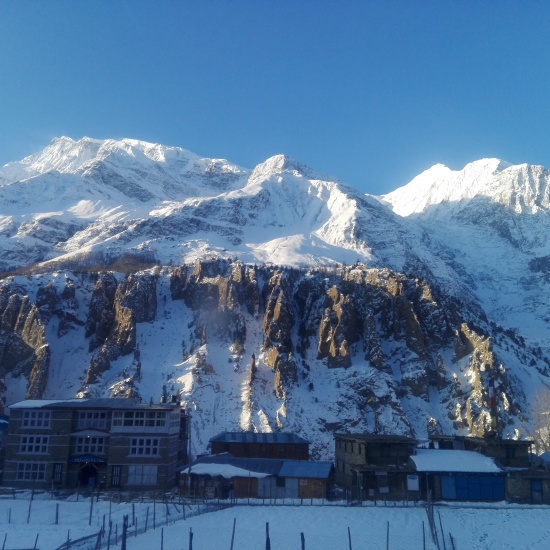
Cause of High Altitude Sickness
The primary cause of High Altitude Sickness is that amount
of available oxygen in the atmosphere decreases with altitude. While the
percentage of oxygen (21%) in the atmosphere remains constant the density of
the atmosphere decreases so that the available oxygen when you take a breath
becomes less. The decrease in density of the atmosphere is not linear and that
density decreases more rapidly with increasing altitude so that the impact of
going from 10,000 to 20,000 feet is not as significant as going from 20,000 to
30,000 feet.
Normal Symptoms at Altitude
It’s perfectly normal to have symptoms as a result of
altitude which include; Hyperventilation (extra breathing), increased
urination, restless sleep and Periodic breathing at night. Periodic breathing
occurs during sleep and may result in you waking up and feeling you have missed
a breath. Periodic breathing is also likely associated with restless sleep as
your body tries to regulate itself and adjust its normal patterns.
Symptoms of High Altitude Sickness
One of the difficulties during the early stages of High
Altitude Sickness is that the symptoms can be similar to other common
conditions such as; dehydration, fatigue or the common cold or flu. It’s
important to make the correct treatment choices and always error on the side of
safety. One of the most common symptoms is the development of a High Altitude
Headache. Diagnosis of High Altitude Sickness is made when a High Altitude
Headache is present along with one or more of the following symptoms; loss of
appetite, nausea, vomiting, fatigue/weakness, dizziness and serve insomnia.
High Altitude Headache alone is not sufficient for a diagnosis and the trekker
may decide to continue gaining elevation but should be on increased alertness
for the development of other symptoms. If High Altitude Headache occurs along
with at least one other symptom either descend in elevation or at least stay
put until symptoms resolve.
High Altitude Sickness left untreated can advance to high
altitude cerebral edema (HACE) or High Altitude Pulmonary Edema (HAPE). The
symptoms of HACE are unmistakable as the individual will have a drunken like
walk. The symptoms of HAPE are completely different and are as follows;
coughing pink or frothy sputum, tightness of the chest, shortness of breath at
rest, a gurgling breath as if the lung is congested, a bluish discoloration of
the skin (Cyanosis) and/or an abnormally fast resting heart rate of over 100
HBM. Once HACE or HAPE develops death is possible within hours unless the
trekker is immediately evacuated to a lower elevation. If someone has signs of
HACE or HAPE its key that a responsible member(s) of the trekking party
accompany this person to a lower elevation immediately no matter the time of
day or the weather conditions.
Pulse Oximetry at High Altitude
Hand-held pulse oximeters are now commonly used in the
diagnosis of High Elevation Sickness as well as HACE or HAPE. Oxygen saturation
readings below 75% may be useful in the diagnosis of HAPE. A limiting factor in
the use of the devices is that Oxygen saturation may remain normal as
individuals tend to breathe faster at higher elevations and thus have normal
readings. The common consensus is that their best use may be as a confirmation
tool for someone who already has definitive symptoms of elevation sickness.
Medications to Prevent High Altitude Sickness
The most common medication used to prevent High Elevation
Sickness is Diamox (Acetazolamide). This can be easily purchased on arrival in
Kathmandu and a dose of 125mg twice daily starting 1 day before ascent has been
suggested by the Everest Base Camp Medical Centre. If you already have High
Elevation Sickness the dose can be increased to 250mg twice daily. It’s a
common myth that this drug only masks the symptoms of High Elevation Sickness
but it actually works to speed the natural acclimatization process by
acidifying the blood and thereby stimulating the depth and frequency of your
breathing.
A recent study done on trekkers in Nepal suggests that three
times daily dosage of ibuprofen at 600mg may be effective at reducing high
elevation sickness. The caveat here is that while it may effectively reduce the
symptoms of high altitude headache it may only be masking the impact of high
elevation sickness.
The Facts about Proper Acclimatization
The best rate of acclimatization is to gain no more than
300m (1000 feet) per a day. If you increase this rate you will be much more
susceptible to Elevation Sickness. This should be considered based on where you
sleep at night and not how high or low you trek during day. In fact trekking
higher during the day and then returning to a lower elevation to sleep can
speed the rate at which you acclimatize but its not an excuse to break the
basic rule.
Drinking Alcohol and Coffee at High Elevation
Alcohol is a member of the benzodiazepine family and as such can suppress breathing which results in lower blood oxygen levels so should be avoided as a general rule. Coffee has no impact on acclimatization and if you typically drink several cups a day keep at it. If you are a regular coffee drinker be aware that stopping abruptly could cause a severe headache that might be confused with a high altitude headache.
Group Psychology and High Elevation Sickness
Several studies have suggested that individuals trekking in
organized groups may be more susceptible to high elevation sickness. The
postulated reasons are that individuals are impacted by group psychology and
don’t want to cause difficulties for the group as a whole. It’s important to
keep this in mind as an individual and maintain a level of self awareness. It’s
better to rest a day and get proper acclimatization then deny symptoms which
may result latter in an evacuation.






